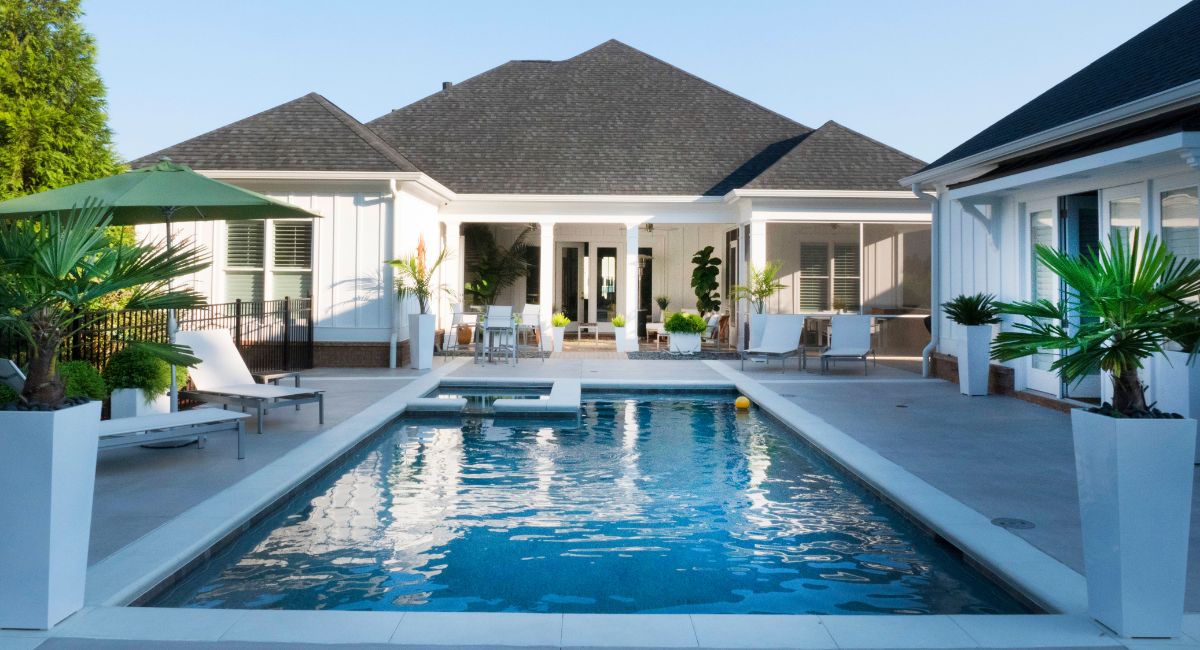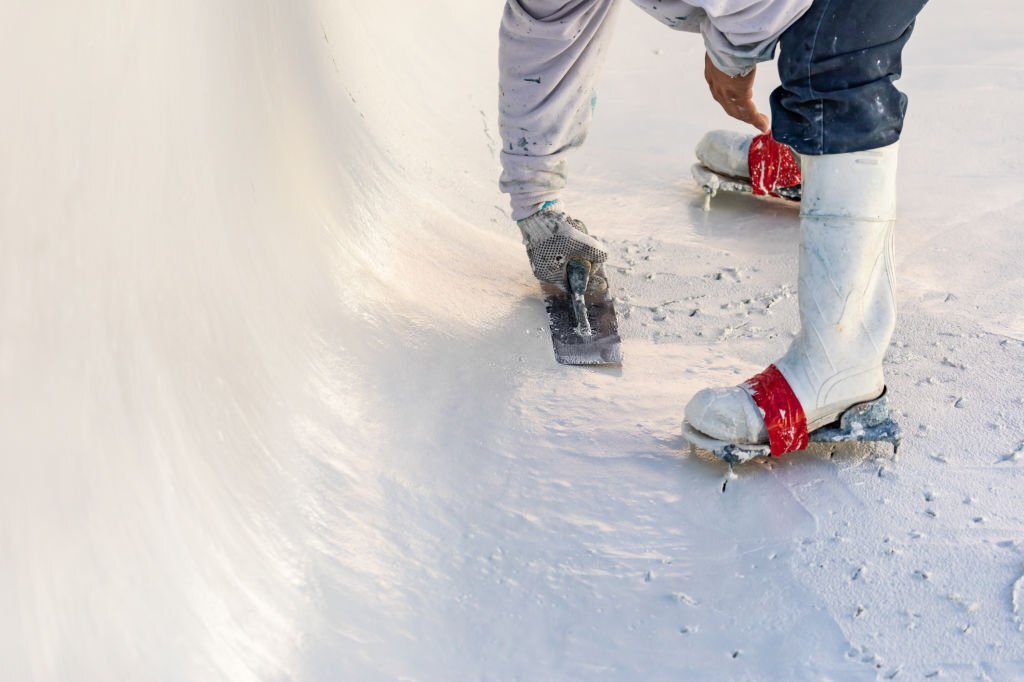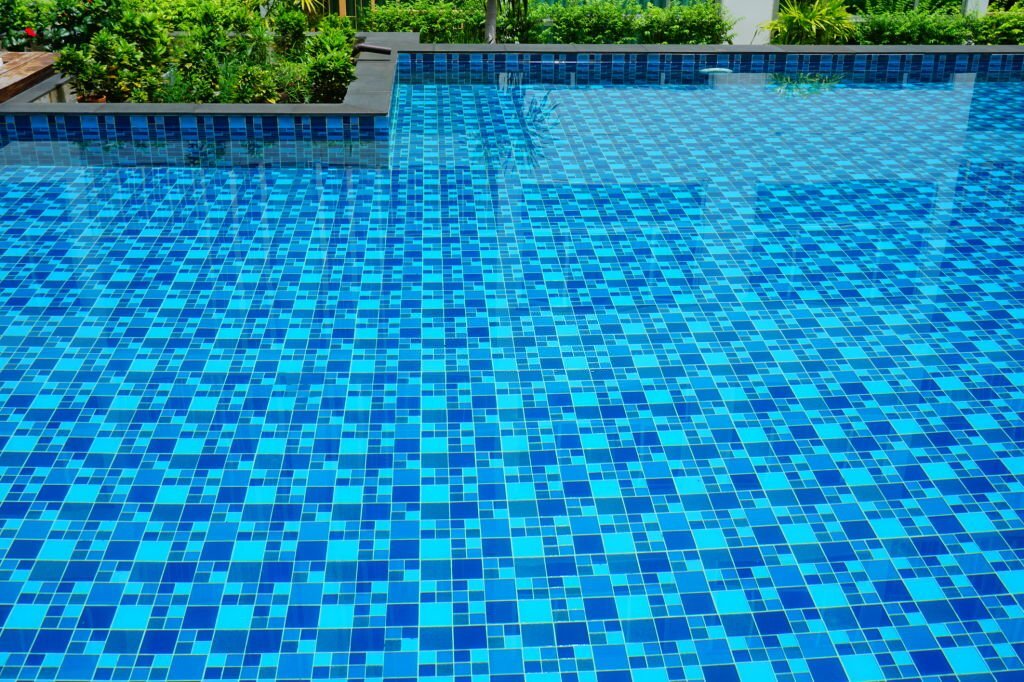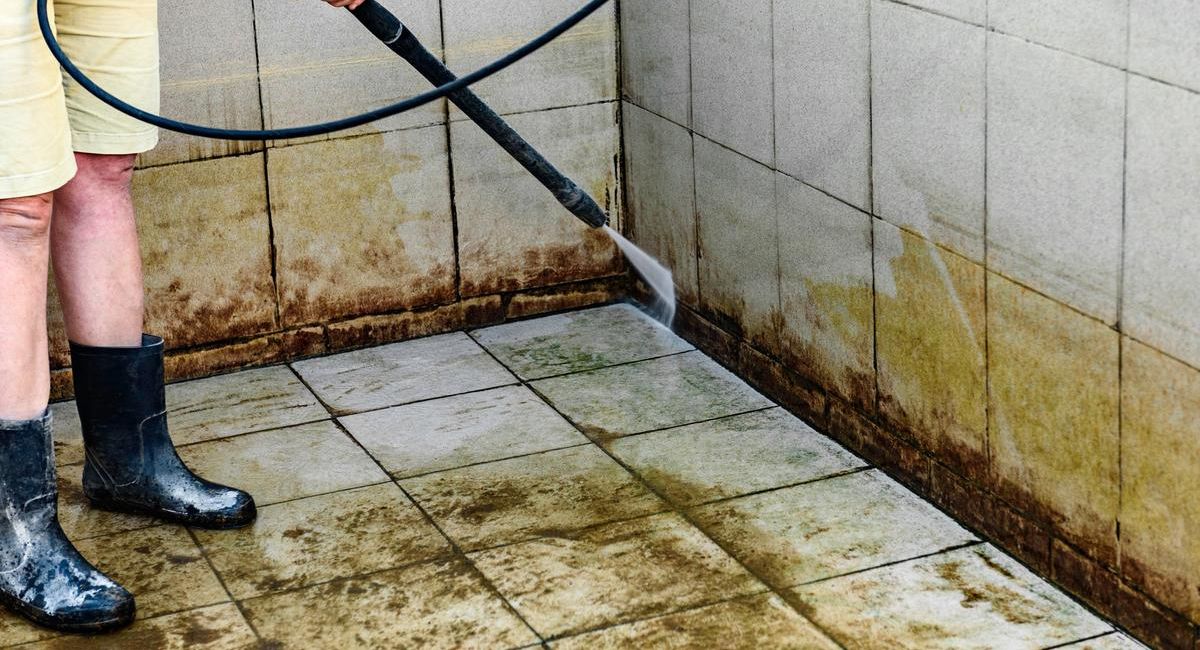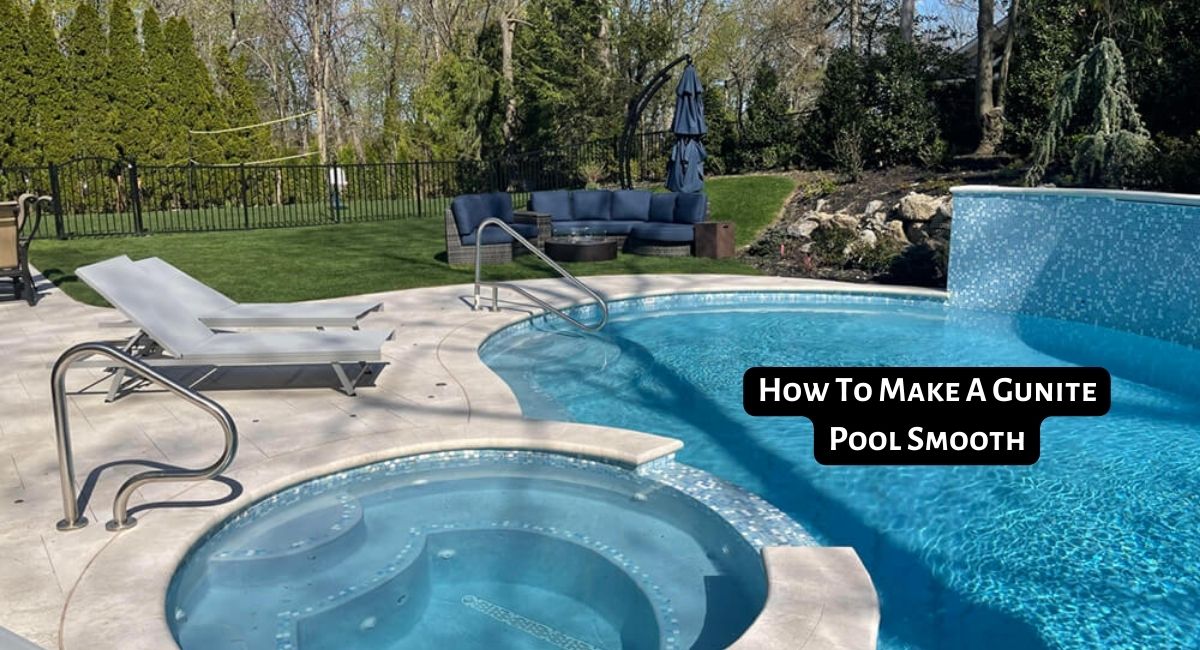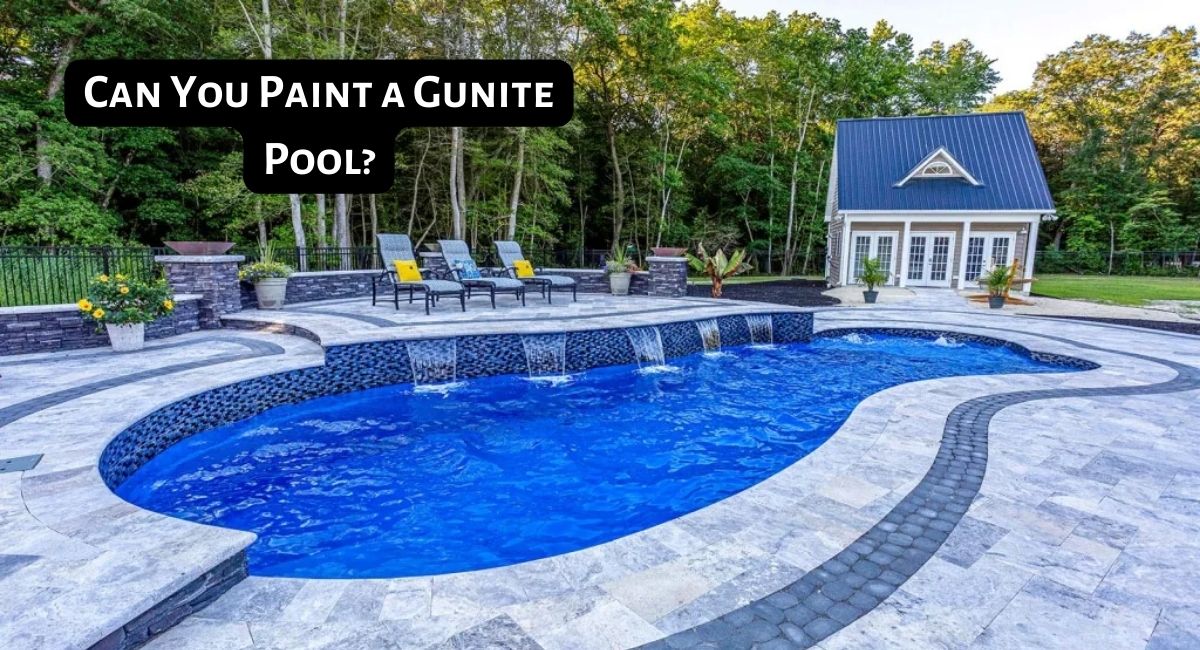One of the great benefits of gunite or concrete pools is the ability to customize the pool surface color and finish. As a gunite pool ages, the surface plaster may become stained, cracked, or just appear dull and faded.
Fortunately, it is possible to restore the appearance and change the color of your existing gunite pool with a plaster resurfacing project.
In this article, I’ll share my 20+ years of experience in the pool industry to provide gunite pool owners with an in-depth guide on how to change your pool color.
I’ll cover important considerations in choosing a new plaster color, the plaster application process, tips for caring for new plaster, estimated project costs, and what to expect through each step of the process from an initial consultation to the final reveal of your pool’s transformation.
My goal is to equip gunite pool owners with the knowledge needed to make informed decisions about changing your pool color and to set realistic expectations for the project. Let’s dive in!
Table of Contents
Factors Affecting the Color of Your Pool Water
Understanding what causes changes in the color of your pool water is essential for maintaining a healthy and inviting swimming pool. There are various factors that can affect the color of your swimming pool’s water. Let’s discuss more in detail.
Pool Depth
First and foremost, the depth of the pool plays a significant role in influencing water color. The deeper the water, the more light it absorbs, which can cause the water to appear darker. In contrast, shallow water appears lighter because it reflects more light. This variation in depth causes a beautiful gradient of hues, transitioning from a light, sparkly blue in the shallow end to a darker, richer color in the deeper parts. Variable pool depths offer a dynamic and appealing visual quality that many pool owners appreciate.
Natural Environment
The surrounding natural environment can also impact the color of your pool water. Trees, grass, flowers, and even the sky can cast colored reflections on the water, subtly influencing its hue. For instance, a pool surrounded by lush greenery might have a slightly green tint, while a pool under a bright blue sky will likely reflect a stunning azure hue.
Pool Plaster Color
The color of the plaster used to line the pool plays a substantial role in determining water color. Light-colored plaster tends to create bright, clear water, while darker plaster results in deep, intense water colors. From light blues and vibrant turquoises to deep sea greens and midnight blues, the choice of plaster color drastically affects the look of your pool.
Sunshine
The level of sunshine your pool gets is another major factor. Sunlight directly interacts with water and influences how we perceive its color. A pool in direct sunlight will sparkle with a brilliant blue, while a pool in a shaded area will take on a deeper, more subdued hue.
Weather Changes
Changes in weather can have a significant effect on your pool’s color. Heavy rain can dilute pool chemicals, making the water appear cloudy or murky. On the other hand, warm, sunny weather can promote algae growth, which can turn your pool green if not dealt with promptly.
Shade
Much like sunlight, shade too impacts the perceived color of your pool water. Pools that are often in the shade due to trees, buildings, or other structures can appear to have a darker hue. The absence of reflecting light makes the water look deeper and sometimes, more enticingly mysterious.
Cleanliness
A factor that can drastically alter your pool’s color is its cleanliness. Immaculate, clear water will always appear much more vibrant and inviting than cloudy or dirty water. Unwanted contaminants, such as algae, leaves, or dust, can not only make the water unhospitable but also ruin its aesthetic appeal.
Depth Variations
Finally, pools with varied depths, like a shallow end and a deep end, inherently have varying water colors. This change in color can make your pool look more visually diverse and appealing. A gentle slope from the shallow to the deeper end affords a delightful change of hues, from dazzling light blues to rich, intense dark blues.
Popular Gunite Pool Color Options
Below are some of the most sought-after gunite pool color options. Selecting the right color is crucial, as it sets the tone for your pool’s overall appearance and ambiance. Each color has its personality and functional implications.
Whether you’re looking for a classic look, a natural feel, or a contemporary touch, the broad palette of gunite pool colors ensures there’s something for every taste and vision.
White Plaster
A white plaster finish is the quintessential backyard pool color. It offers maximum light reflection and brightness. The water takes on a beautiful bright blue hue. White plaster provides a clean, classic look that fits any style, from vintage to modern.
In terms of durability, white marble plaster generally lasts 5-10 years. It requires frequent brushing and cleaning to prevent visible stains. White is one of the most affordable plaster options. This classic finish costs around $3-5 per square foot installed. The reflective surface also absorbs less heat. For safety, white provides excellent swimmer visibility.
Light Blue Plaster
Varying shades of light or sky blue plaster are also sought-after. They offer a soft, cooling look. Depending on the shade, light blue water can appear greenish, turquoise, or pale blue. It’s relaxing and tranquil.
Softer light blue plaster may show wear sooner than white depending on the hue. Maintenance needs are moderate overall and cost is comparable to white at about $5-6 per square foot. The lower heat absorption is better for the environment. Light blue also allows for good swimmer visibility for safety.
Dark Blue Plaster
For a deep ocean-inspired pool, dark blue is perfect. Navy, cobalt, or lapis blue evoke a tropical resort vibe. The rich hue contrasts well with salt interior finishes and stone decking. Cobalt additives increase durability over standard dark plaster. But chemical maintenance is needed to combat algae growth.
Dark blue plaster typically costs $6-8 per square foot installed. The price is moderately higher than lighter color options. One trade-off is that dark blue absorbs more heat from the sun. Visibility below the surface is also reduced compared to lighter plaster finishes.
Silver/Gray Plaster
Silver and gray plaster colors align with modern pool designs. The tone has an edgy, high-tech look, almost like liquid metal. Glass beads make the finish very durable and long-lasting. Maintenance needs are reduced compared to some colors.
However, silver and gray plaster typically costs $8-12 per square foot installed due to those glass bead additives. The higher price is worthwhile since these finishes absorb less heat for energy efficiency. One downside though is that swimmer visibility decreases with silver and gray plaster. This is because these colors tend to blend with the water, making it more difficult to immediately spot someone in distress.
Black Plaster
Nothing makes a bolder statement than a black plaster finish. The water really pops against this dramatic backdrop. But black plaster is prone to cracking over time and requires the most maintenance. It’s also the most expensive pool plaster option, with costs ranging from $12-15 per square foot installed.
For a 400 square foot pool, you’ll pay $4,800-$6,000 for black plaster, making it quite an investment. However, the higher cost may be worthwhile for some seeking a truly unique look. One downside is that black absorbs significant heat from the environment, increasing pool heating costs. And swimmer visibility is dangerously low with the dark color.
How to Choose Pool Color
Choosing the right pool color is a combination of aesthetic preference, functionality, and understanding how different factors can influence the perceived color of the water. Here’s a guide to help you choose the perfect pool color:
Consider the Ambiance
- Cool and Calm: Lighter shades like blue or turquoise give a tropical, serene feel.
- Elegant and Sophisticated: Darker shades like deep blue, navy, or even black can give a lagoon-like depth and a touch of luxury.
- Natural and Earthy: Greens, browns, and beige tones can blend seamlessly with a natural landscape.
Understand Water Color vs. Pool Surface Color: The color of the water is not solely determined by the pool’s surface color. It’s also influenced by the depth of the water, lighting, surroundings, and even the sky. For instance, a light blue pool surface might give you a clear turquoise water color, while a deep blue might result in a richer, darker water hue.
Maintenance and Appearance: Darker colors can make it harder to spot debris and might require more frequent cleaning. Lighter colors might show stains or discoloration more easily but can make the pool look cleaner as they reflect more light.
Temperature Considerations: Darker colors absorb more sunlight and can make the water warmer, which might be beneficial in cooler climates but not ideal in hotter areas. Lighter colors reflect more sunlight, keeping the water cooler.
Safety: A uniform color might make it hard to distinguish between the shallow and deep end. Consider using different shades or tiles to mark depth changes.
Surrounding Landscape and Architecture: Consider the colors of your home, decking, landscaping, and other features. Your pool should complement these elements.
Material and Finish: Different materials (plaster, pebble, tiles, vinyl liners) come in various colors and finishes. Each has its own aesthetic appeal and maintenance requirements. Reflective materials or finishes can add shimmer and sparkle to the water.
Consult Professionals: Pool builders and designers can provide samples and even digital mock-ups to help visualize the final look. Visiting pool showrooms or looking at portfolios can give you a better idea of how different colors look when applied.
Personal Preference: Ultimately, the best color is the one that you love and will enjoy for years to come. Consider your personal preferences and the kind of ambiance you want to create.
Methods to Change the Color of a Gunite Pool
Here are some methods to change the color of a gunite swimming pool:
Pool Plaster Resurfacing
Pool plaster resurfacing is the most complete method for changing the color of an existing gunite pool. To start the resurfacing process, the pool is fully drained and the water is removed. Next, the entire interior surface is sandblasted using a pressurized air compressor and abrasive sand media.
This removes the old plaster coating down to the bare concrete gunite shell. The surface is then thoroughly cleaned and prepped for the new plaster. The desired fresh plaster color is selected and expertly applied by hand throughout the pool interior.
Plaster requires careful blending and smoothing to ensure an even coverage and cohesive look. Once the plaster cures fully, the pool is carefully refilled, the equipment is recalibrated, and chemical levels are balanced.
With a new colored plaster coating applied using proper techniques, the pool takes on a completely renewed appearance. Resurfacing allows for dramatic color transformations, giving gunite pools an updated, revived look.
Partial Plaster Repair
Partial plaster repair is a more cost-effective option for gunite pools that have isolated areas of color fading or minor flaws. Rather than resurfacing the entire pool surface, this targets only the affected spots. The process begins by draining the pool water below the level of the damage.
The problematic patches are identified and sandblasted to remove the old plaster in those spots. The perimeter of the patch is feathered to create a smooth transition. New plaster in the desired color is skillfully blended into the existing surface surrounding the patch.
The plaster is allowed to fully cure before refilling the pool. The color and texture match may not be perfect, but partial patching avoids the cost and downtime of a full resurfacing. It provides a quick fix for minor plaster damage or discoloration in one or two areas of the pool.
Painting
Painting provides a more affordable and quicker option for changing the color of a gunite pool compared to replastering, with cost savings of 50% or more. Special epoxy-based paints are designed to adhere well to existing plaster surfaces. However, diligent surface preparation is crucial involving etching, priming, and cleaning prior to painting.
Multiple coats of quality epoxy paint must be evenly applied using proper techniques to achieve good coverage. Rollers are used to apply the special paint formulation. With proper application, the paint bonds tenaciously to the underlying plaster. However, the trade-off is that a painted finish is not as durable or permanent as fresh plaster.
Over time, painted surfaces tend to blister, crack, peel or become damaged much sooner than plaster. Typically touch ups are needed after just 1-2 swimming seasons as the color fades or wears away.
So while painting provides a quicker, cheaper pool color transformation, the results are temporary. For a permanent color change that lasts 5-10 years, full plaster resurfacing is recommended over painting.
Pebble Finishes
Pebble finishes create a beautiful, natural stone-like appearance for the interior pool surface. Small, smooth river pebbles of varying colors and sizes are embedded into wet plaster as it is being applied. The pebbles become firmly adhered and set in place as the plaster cures. The final result is a unique multifaceted, shimmering finish that mimics the look of exotic rock formations.
Aside from the aesthetic appeal, pebble also provides added durability and slip resistance. The textured surface helps prevent slipping on the pool stairs and floor. And the pebbles make the surface more resistant to chipping and cracking over time. Pebble finishes can be paired with classic white or light blue plaster, or even richer hues like black for dramatic contrast.
The pebble application essentially occurs during the plastering process. So switching to this type of multi-dimensional, decorative finish when resurfacing can completely transform the ambiance of a gunite pool.
Tile
Installing tile at the pool waterline provides a beautiful way to add a pop of color and visual drama. Glass, ceramic, and porcelain tiles all work well in the wet pool environment. A variety of colors, shapes, and designs are available to perfectly complement the plaster finish and create your desired aesthetic.
The tiles are adhered using a mortar bed or mastic directly onto the existing plaster or concrete surface. Grout is applied between the tiles and sealed. Not only does tile provide aesthetically pleasing decoration, it also increases durability. The waterline endures constant wear and tear and is prone to plaster cracking or chipping over time.
A tile band shields this vulnerable area. Tile also hides unsightly accumulations of oils, lotions, and chemicals that can occur at the waterline. Combining colored tile with a fresh coat of plaster is a great way to reinvigorate an older gunite pool. The tile instantly upgrades the look.
Exposed Aggregate
The exposed aggregate technique creates a beautiful, mottled finish showcasing the natural underlying stone in the plaster. After initial plaster application, while still curing, the surface is treated with an acid wash. This chemically etches away the top layer of plaster, removing the fine cement film and exposing the course aggregate components.
Using a pressure washer, the remaining exposed pebbles, stones, or quartz are revealed. This leaves an organic, speckled texture and variegated color effect depending on the type of aggregate used. Exposed aggregate provides a decorative, natural stone appearance without the cost of real stone veneers. The mosaic-like finish also increases slip resistance.
And its mottled blend of colors hides flaws and wear better over time. Applying an exposed aggregate treatment upon resurfacing lets homeowners completely transform a standard white or blue plaster pool into a unique work of art. The look of exposed aggregate is eye-catching and contemporary.
Quartz Finish
Quartz finishes, which involve adding colored quartz stones or particles into the plaster coating during the re-plastering of a gunite pool, serve as an attractive and durable option for pool owners. The variety of colors available ranging from blue, green, tan, white, black and many more can create stunning custom combinations.
These colored aggregates are integrated into the plaster coating prior to its application, thereby becoming visible add-ons to the surface, resulting in a shimmering, multi-hued appearance that reflects light creating a vibrant visual interest. Aesthetically pleasing, the quartz aggregate finishes also provide a textured look that is a refreshing change from the standard smooth plastered surface.
Aside from the enhancement in aesthetics, the quartz finishes are also recognized for their increased durability and slip-resistance. The hardness of the quartz stones lends a protective layer that safeguards the surface against etching and chemical damage, contributing to its longevity. Although similar to the application of standard plaster in terms of troweling onto the gunite, a layer of color quartz is added during the finishing phase.
Very often a resin or sealcoat is also applied on top of the quartz plaster to boost its shine and ensure a smooth feel to walk on. The end result can range from a subtle shimmer to a heavier layered quartz that resembles pebble depending on the quartz to plaster ratio used.
Even though the addition of quartz comes with an increased cost compared to the regular plaster, this decorative, durable and unique finish is worth the investment. However, a crucial aspect to note is that the plastering should be done properly to avoid uneven distribution of the colored quartz since when it’s done right, the results are absolutely stunning.
Fiberglass Overlay
Installing a fiberglass overlay provides a permanent way to transform the appearance of a gunite pool. Custom fiberglass panels are fabricated to precisely fit the unique contours and dimensions of your existing pool shell. These seamless panels are made from durable composite materials like polyester resin reinforced with glass fibers.
The backside is etched to enable a strong adhesive bond to the old concrete surface. The panels are adhered using a special structural epoxy along with mechanical attachments using screws and clips. This ensures maximum strength and longevity of the new fiberglass skin.
Aside from changing the color, the new smooth fiberglass surface resists cracking, peeling or deterioration from chemicals. And maintenance is reduced compared to plaster. While more expensive initially, a full fiberglass overlay is a permanent solution that can last up to 20 years.
For homeowners seeking complete rejuvenation of an aging or damaged gunite pool, a custom fiberglass overlay is a worthwhile investment that provides dramatic, long-lasting results.
Pool Liners
Installing a fresh pool liner provides a quick and affordable way to dramatically change the look of a gunite pool. Liners come in a variety of eye-catching colors and patterns to match any desired aesthetic. The liner material is typically a PVC or similar vinyl that is resistant to chemicals and wear.
During installation, the existing pool is drained and the old plaster surface is prepped and smoothed. The custom-fit liner is placed over the entire pool, with excess material trimmed away. It is carefully secured in place using plastic coping strips around the top edges. Tile or mosaics can even be added on top of the liner for further decoration.
Aside from transforming the color, liners also provide protection for aging or damaged concrete. However, liners typically last just 5-10 years before needing replacement. And the vinyl material is susceptible to punctures, tears or bubbles forming.
Still, installing a fresh liner provides an easy color change and restoration for tired gunite pools at a reasonable cost. Liners breathe new life into the look of a pool.
Does Pool Plaster Change Color as It Cures
Yes, pool plaster can change color as it cures. The color change is a result of several factors:
- Curing Process: As the plaster cures, the chemical reactions taking place can lead to a change in color. This is especially true in the first few days after application.
- Calcium Efflorescence: This is a white, powdery residue that can appear on the surface of new plaster. It’s caused by calcium hydroxide (a byproduct of the curing process) reacting with carbon dioxide in the air to form calcium carbonate. This can give the plaster a whitish appearance.
- Mottling: Pool plaster can sometimes display a mottled appearance, which means there are variations in the color. This can be due to factors like inconsistent mixing, variations in the application technique, or differences in the rate at which the plaster dries.
- Water Chemistry: The chemistry of the water can affect the color of the plaster. For instance, if the water is too acidic, it can erode the plaster and cause discoloration. On the other hand, if the water has high calcium hardness, it can lead to calcium deposits on the plaster, changing its appearance.
- Type of Plaster: There are different types of pool plaster, including white plaster, colored plaster, and quartz or pebble finishes. Each of these can change color differently as they cure.
- Exposure to Sunlight: UV rays from the sun can lead to discoloration of the plaster over time.
- Stains: Organic debris, metals in the water, or algae can cause stains on the plaster, leading to discoloration.
It’s essential to monitor the pool’s water chemistry and ensure it’s balanced to minimize discoloration. If you’re concerned about the color change, it’s a good idea to consult with a pool professional to determine the cause and possible solutions.
You Might Also Like
Can You Paint a Gunite Pool: Discover the key factors involved in painting a Gunite pool and whether it’s a feasible option for your pool maintenance. Learn about the benefits, challenges, and considerations before diving into this transformative project.
How Much Does It Cost to Paint a Gunite Pool: Get an in-depth look at the expenses associated with painting a Gunite pool. This article breaks down the costs involved, including materials, labor, and additional factors that can affect your budget. Make informed decisions for your pool renovation project.
How to Acid Etch a Gunite Pool Before Paint: Dive into the step-by-step guide on preparing a Gunite pool for paint application through acid etching. Learn the importance of this process, the required materials, and safety precautions to ensure a successful and long-lasting pool restoration.
Conclusion
Changing the color of your gunite pool is a great way to upgrade the look of your backyard oasis and make it better suit your personal tastes. After years of the same plaster color, it can be refreshing to mix things up with a brand new hue. Not only does it provide visual appeal, but fresh plaster also improves the overall quality and functionality of your pool.
When considering a pool replastering or refinish, there are many options to achieve the color and look you’re after, from basic plastering to quartz and tile finishes. The possibilities are nearly endless! Work closely with qualified pool plastering professionals and discuss the pros and cons of different techniques to settle on the right solution for your pool.
It’s also important to think ahead when selecting a color – opt for something classic that you’ll enjoy for years to come. Neutral plaster tones along with whites and light blues tend to provide timeless choices. Bolder colors can make more of a statement in the short-term but may feel dated faster.
No matter what color or finish you ultimately choose, investing in updating the look of your gunite pool adds tremendous value and enjoyment. You spend so much time in your backyard, it’s worth personalizing it to your style. With a professional replastering job, you’ll be able to relax poolside in a revamped oasis tailor-made just for you.
Frequently Asked Questions
1. Is pool coloring safe?
No, a gunite pool cannot be converted to a vinyl liner pool. Gunite pools are constructed with reinforced concrete and require specialized materials and techniques for installation. Vinyl liners, on the other hand, are installed using an existing pool shell that is retrofitted with the liner. Therefore, it is not possible to convert a gunite pool into a vinyl-liner pool without completely demolishing and replacing the existing structure.
2. Can a gunite pool be painted?
Yes, a gunite pool can be painted. Painting a gunite pool involves the same process used to paint concrete – etching, cleaning, and applying epoxy paint. The type of pool paint and number of layers needed will vary depending on the age and condition of your pool. If you decide to go ahead with painting your gunite pool, it is important to use a professional that has experience in doing this job correctly. Doing it wrong can result in damage to your pool or even worse, a complete failure of the new paint job. With proper preparation and application techniques however, you can successfully change the color of your gunite swimming pool and enjoy its fresh look for many years!
3. What makes a gunite pool blue?
A gunite pool is blue because the mixture of sand, cement and water that makes up the gunite shell reflects a bluish hue. The blue color of a gunite pool can be further enhanced by adding colored aggregates, such as quartz or glass beads, to the mix. Additionally, painting or staining the gunite shell after installation may also produce a deeper blue hue in the finished product.
4. Why does the pool surface fade?
The fading of a pool surface can occur due to a variety of factors, including exposure to sunlight, water chemistry imbalances, and the quality of pool materials used. Sunlight and UV rays can gradually break down the surface materials and cause fading over time. Maintaining proper water chemistry, such as pH levels and chlorine concentrations, is essential to prevent chemical reactions that can accelerate fading. Additionally, using high-quality pool surface materials and regular maintenance can help extend the lifespan of your pool’s surface and reduce fading.
